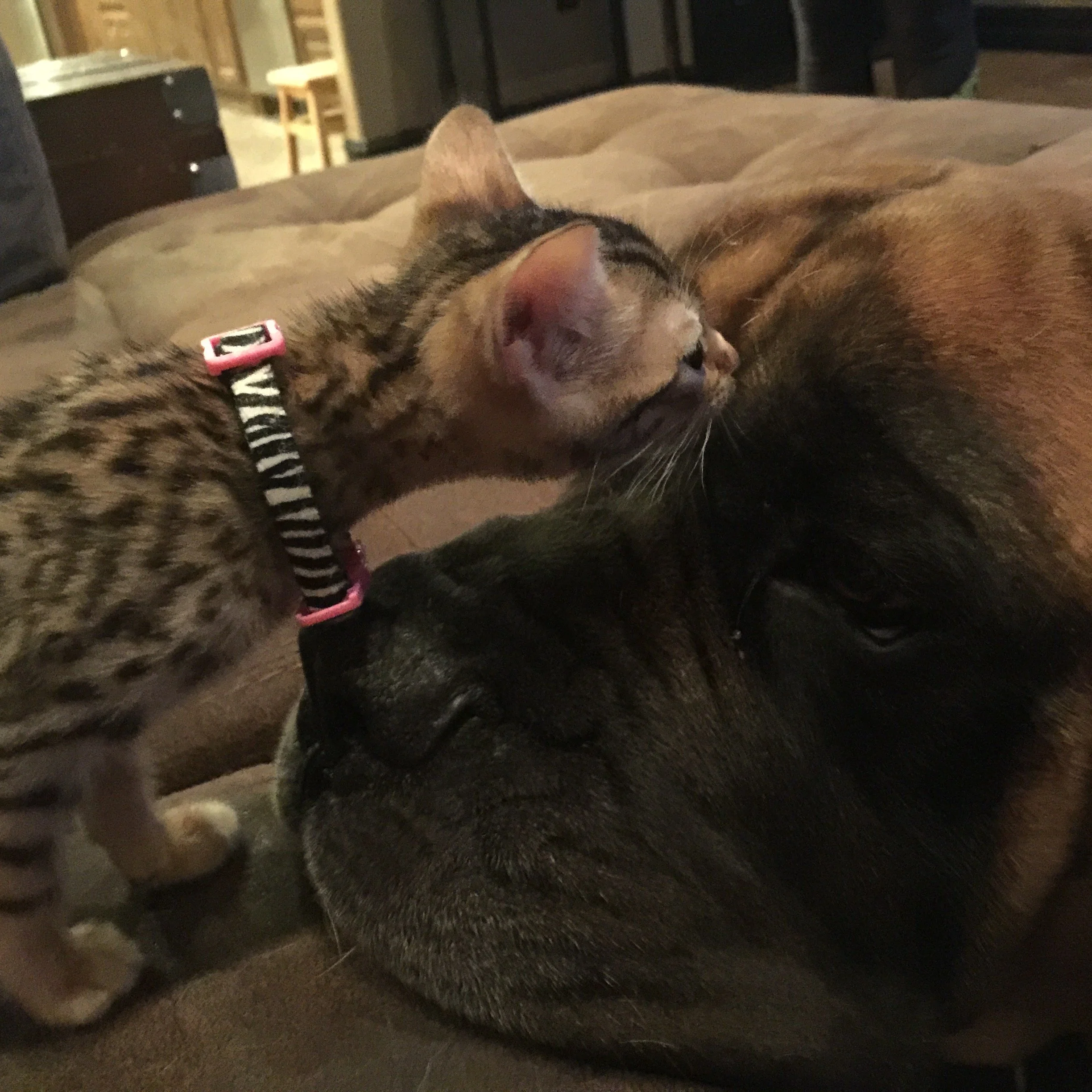Are you introducing a new puppy or dog into your home and not sure how your existing cat or cats will react? Welcoming a new friend so close to your feline family can be daunting, but it doesn’t have to be!
With commitment, patience and plenty of love, you can make the transition of bringing a new dog into their lives as smooth and anxiety-free as possible. Here are some tips for helping both species adjust to each other during this exciting time.
1. Gradual Introduction
As with any new relationship, it's usually best to go slow. Keep initial interaction brief, and use other strategies to get each pet used to one another. For example, try swapping blankets or toys so they can sniff and investigate without the pressure of direct interaction.
From there, you can gradually build up to face-to-face encounters, always monitoring their behavior and providing positive reinforcement for good behavior. With patience and persistence, you can create a harmonious household where all of your furry friends can coexist happily.
2. Positive Reinforcement
Positive reinforcement can go a long way when it comes to training pets. Whether you have a rambunctious puppy or a finicky feline, rewarding them with treats for appropriate behavior can be an effective way to encourage good habits. Giving treats for things like sitting on command or using their litter box can make training fun for both you and your furry friend.
Not only does positive reinforcement help build a stronger bond between you and your pet, but it also enhances their overall well-being. So next time your cat uses the scratching post instead of your couch or your dog listens to your command to stay, don't forget to reward them with a tasty treat!
3. Give Each Pet Their Own Space
Pets are like family members, and just like siblings, they may sometimes quarrel over resources like food, toys, or even sleeping areas. Creating separate spaces can provide a sense of safety for your new pup and cat, and reduces the competition or jealousy that comes from sharing resources.
This can go beyond the introduction phase, and can generally make your cat and dog get along better. Separate eating, sleeping, and play areas can really help to prevent unnecessary conflicts during the introduction phase.
4. Consider using CBD pet products
In recent years, both scientific and anecdotal evidence supporting CBD for dogs has emerged, while becoming more and more popular for cats too. A naturally derived supplement from the hemp plant, it has been shown to have calming effects on animals, especially during anxiety-inducing situations like this. We do recommend speaking with your veterinarian, however, before administering any new supplement to your beloved pets.
5. Supervise Interactions
As much as we love our pets, they can sometimes get a little too rambunctious when interacting with other animals. That's why it's important to supervise these interactions and have someone present to step in if things start to get out of hand. Whether it's a new puppy meeting an older dog or two cats trying to establish dominance, having a watchful eye can make all the difference.
By redirecting any negative behavior before it escalates, we can help our furry friends develop positive socialization skills and ensure that everyone stays safe and happy. So the next time your pets interact, make sure you've got a trusted companion by your side to help keep the peace.
6. Patience is Key
Introducing a new pet into your home can be an exciting time, but patience is key when it comes to the introduction process. This is especially true for cats and dogs, as they have vastly different personalities and ways of communicating. It's important to recognize that it may take several weeks or even months before your pets grow comfortable around each other.
While it may seem like a slow process, it's crucial to allow them the time and space they need to form a bond on their own terms. In the end, the wait will be worth it as you witness the joy of watching your furry family members cuddle up together and playfully chase each other around the house.
In summary
While introducing your pets to each other can be a challenge, it can be an even more rewarding experience. With the right approach, patience and positive reinforcement it is possible for cats and dogs to develop a cordial relationship. Remember to start slow by allowing them to get used to each other’s scents before introducing face-to-face contact.
Give each pet their own space with enough of the resources they need so that they do not feel threatened or have to compete for resources. Finally, always supervise interactions until you are sure your pets have grown comfortable spending time together. If done successfully, your pets can learn to get along in a happy and safe environment – creating more harmony in your home!



